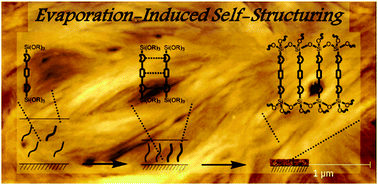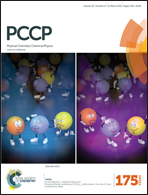Evaporation-induced self-structuring of organised silica nanohybrid films through cooperative physical and chemical interactions†
Abstract
In this work, we develop the concept of evaporation-induced self-structuring as a novel approach for producing organised films by exploiting cooperative physical and chemical interactions under far-from-equilibrium conditions (spin-coating), using sol–gel precursors with multiple functional groups. Thin films of self-structured silsesquioxane nanohybrids have been deposited by spin coating through the sol–gel hydrolysis and condensation of a bridged organosilane bearing self-assembling urea groups. The resulting nanostructure, investigated by FTIR, AFM and SEM, is shown to be highly dependent on the catalyst used (nucleophilic or acidic), and can be further modulated by varying the spinning rate. FTIR studies revealed the presence of highly organised structures under acidic catalysis due to strong hydrogen bonding between urea groups and hydrophobic interactions between long alkylene chains. The preferential orientation of the urea cross-links parallel to the substrate is shown using polarized FTIR experiments.


 Please wait while we load your content...
Please wait while we load your content...